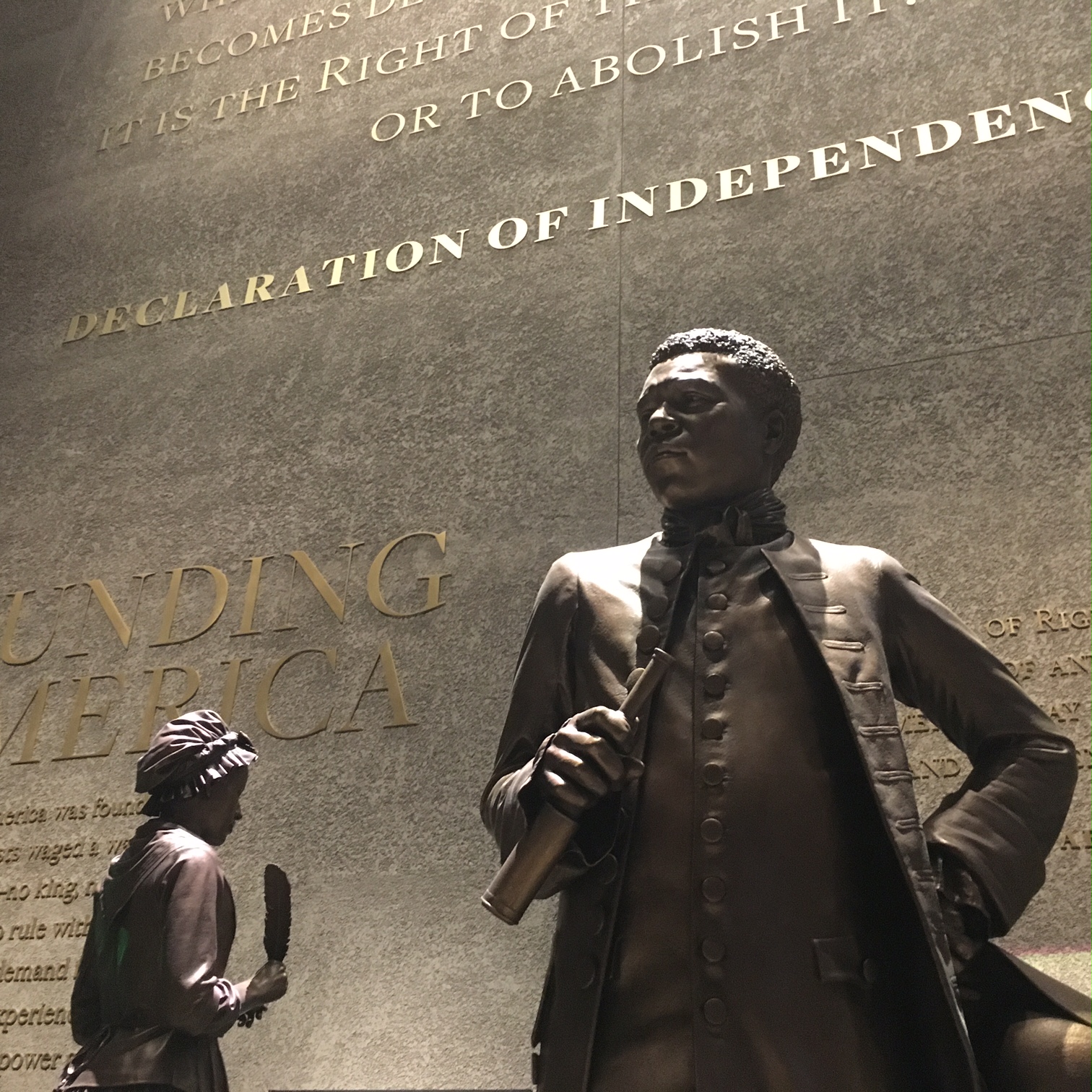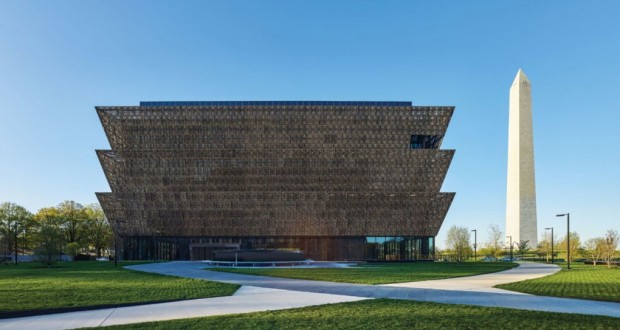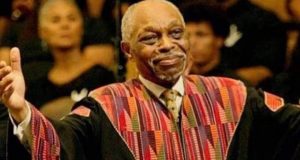By Eric Easter, Urban News Service
The just-opened National Museum of African American History and Culture is a work-in-progress — in every way. Surprisingly, this is its best asset.
In one way, that description is literal. On Media Day, less than 10 days before its grand opening, the museum’s grounds still were littered with the cigarette butts, snack bags and other leftovers from the hundreds of construction workers who put the final touches on the building.
 Inside, journalists scoured the space for stories to tell. They navigated around carts that carried pieces of exhibits yet to be nailed in and observed priceless objects amid handwritten signs whose installation instructions read “too tall” and “put nothing on top.”
Inside, journalists scoured the space for stories to tell. They navigated around carts that carried pieces of exhibits yet to be nailed in and observed priceless objects amid handwritten signs whose installation instructions read “too tall” and “put nothing on top.”
Yet even with the museum finally open for business, it remains incomplete — by design. Six hundred years of African American history — and the culture that grew from centuries of struggle, pain and triumph — is too sweeping an epic to contain on a few floors. The only way to do so is to consider the museum not a permanent collection of artifacts, but a living space that will evolve, shift, re-focus and re-invent itself — just like the community it seeks to reflect.
The extraordinary effort to fund and build the new museum has overshadowed the even harder work performed by the museum’s curators. They gathered and edited the more-than-37,000-item collection into a coherent narrative.
The decision to start the museum’s story in pre-colonial, 15th-Century Africa involved an “intense” process, said Mary Elliott, curator of the museum’s history section. She consulted noted scholars including Ira Berlin, Eric Foner and Annette Gordon Reed to help set the necessary context for the full museum. But Elliott soon realized that a full reading of that time would be “too dense” for the average museum-goer.
“We needed to start with the reality of a free Africa and its position as a center of trade,” said Elliott. “But we wanted to go much deeper into the stories of the Italian role in financing the slave trade, as well as a more in-depth look at conditions in Europe that set the stage. But that’s a lot to ingest for the average museum-goer.”
The need to add some things and delete others at times was “heartbreaking.”
Those decisions, no doubt, will cause some to quibble about the tone, length or depth of some exhibits. And some criticisms will be fair. The displays on Reconstruction and the role of blacks in the military seem especially short given the importance of those themes.
But those arguments don’t account for the realities of a museum audience raised on Twitter, Wikipedia and TV on-demand. The tourist who tries to squeeze in all of Washington’s 17 Smithsonian museums in a few days will lack the capacity to absorb generations of pain and progress in one fell swoop. Return visits will be a must.
Still, those who want to go deeper will get that opportunity. The museum offers a full-time staff genealogist to help families discover their roots. Scholars can enjoy the museum’s research rooms. Public programming and temporary exhibits will let curators breathe more life into subject matter and explore contemporary themes and issues via multimedia and assorted technologies.
As a full body of work, the museum is a treasure. Its existence tells a story and stands as a tribute to a culture that has triumphed amid adversity. The displays simply accentuate that idea through stories that are tragic, critical, objective and, ultimately, celebratory. It is a museum about American possibility, as told through the story of a people whose American-ness too often has been denied and questioned. This museum should end such doubts.
What visitors will experience is best exemplified in a moment that occurred during one of many pre-opening receptions.
Speaking at an event hosted by Google, former Rep. Susan Molinari (R – New York), who is white, shared her experience at the museum. She fought through tears as she recalled one section that particularly resonated with her. The mostly black audience reacted politely. Many of them later said that, because of their own families’ legacies, they might have reacted differently to the same moment.
That may be what happens to everyone who passes through the museum’s doors. What one sees and experiences will be very different — depending on the history, knowledge and perspective that one carries through the entrance. That, in the end, is the true power of the place.
 Westside Story Newspaper – Online The News of The Empire – Sharing the Quest for Excellence
Westside Story Newspaper – Online The News of The Empire – Sharing the Quest for Excellence




